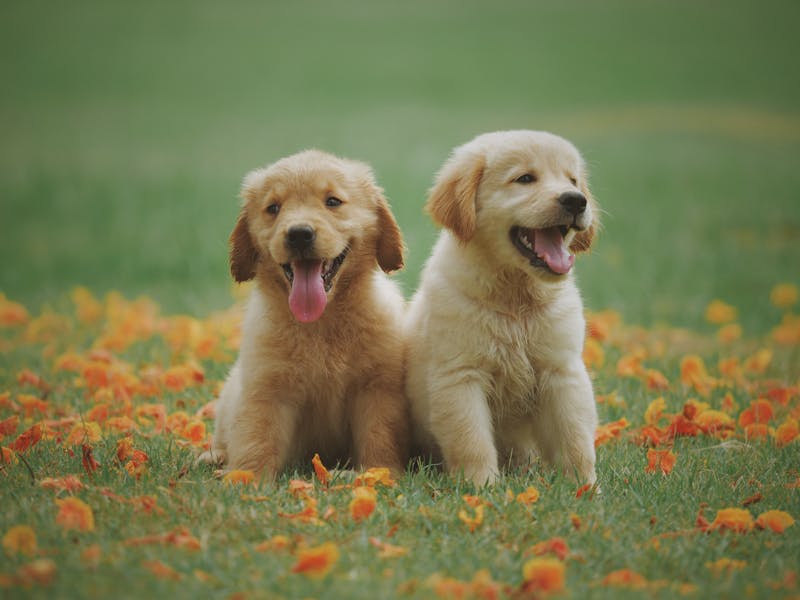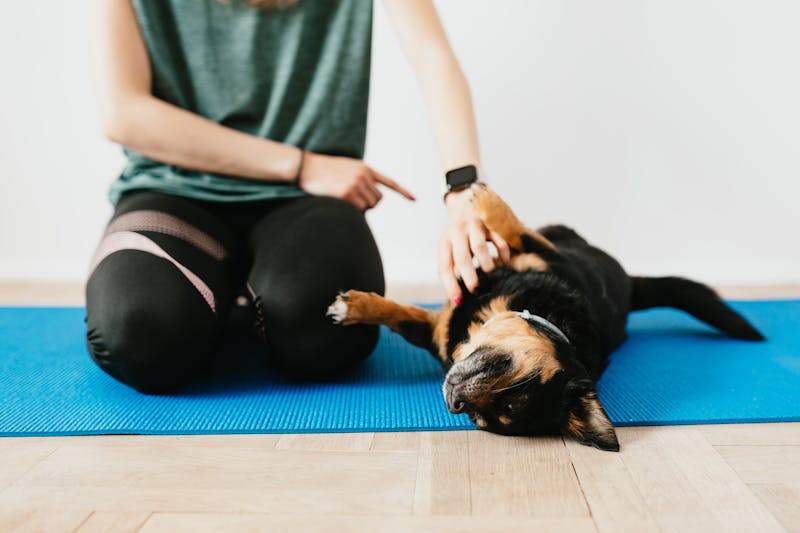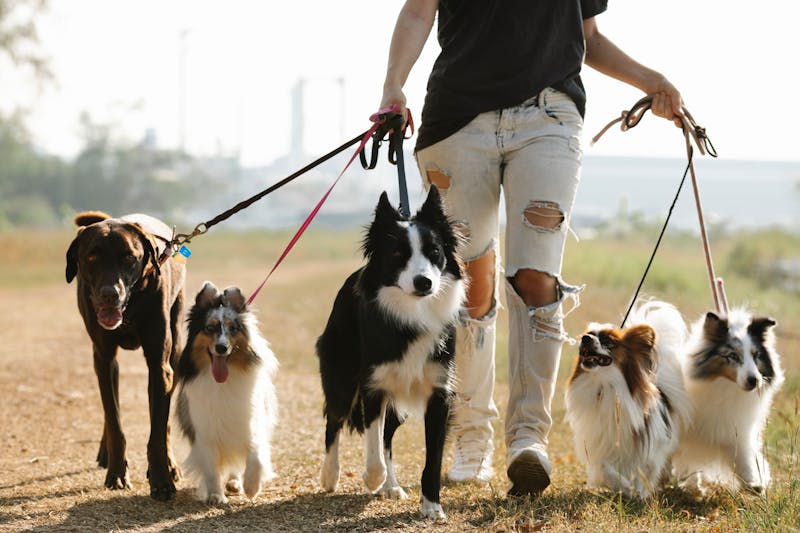Introducing Puppy to Cat: The Complete Guide to Peaceful Pet Integration
Learn the proven step-by-step process to help your new puppy and resident cat develop a harmonious relationship through expert-backed socialization techniques.
Bringing a new puppy into a home where a cat already reigns supreme can be both exciting and challenging. The process of introducing your puppy to your cat requires patience, understanding, and a strategic approach to ensure both pets feel safe and comfortable in their shared environment.
💡 Key Success Factor
When done correctly, careful introduction can lead to a harmonious multi-pet household where both animals coexist peacefully—and in many cases, even develop a genuine bond.

Many pet owners underestimate the importance of proper introductions between dogs and cats, often expecting the animals to “work it out on their own.” However, this approach can lead to stress, fear, and even aggressive behaviors that may persist for years. In this comprehensive guide, we’ll walk you through everything you need to know about pet socialization techniques specifically tailored for puppy-cat introductions.
Preparation: Setting the Stage for Success
Before your new puppy even crosses the threshold of your home, proper preparation is essential for smooth dog-cat introductions. This groundwork can make the difference between a stressful transition and a relatively smooth one for all involved—including you!
⚠️ Pro Tip
Successful pet integration doesn’t necessarily mean your cat and puppy will become best friends—peaceful coexistence is often a perfectly acceptable outcome.
Understanding Pet Personalities and Compatibility
Not all cats and puppies will react the same way to new animal introductions. Your cat’s temperament, age, and previous experiences with dogs will significantly impact how they respond to a new puppy. Similarly, different dog breeds and individual puppies have varying prey drives, energy levels, and socialization needs.

Creating Safe Spaces for Both Pets
One of the most crucial aspects of preparation is ensuring each pet has their own safe space where they can retreat when feeling overwhelmed.
For Your Cat:
- Elevated spaces (cat trees, shelves, tall furniture)
- Cat-only rooms with baby gates
- Multiple hiding spots throughout home
- Puppy-free access to essentials
For Your Puppy:
- Secure crate or pen for rest
- Separate room for initial adjustment
- Own feeding area away from cat
- Comfortable bedding and toys
Essential Supplies Checklist
Before bringing your new puppy home, gather these supplies to facilitate the introduction process:
- Baby gates or pet gates
- Secure crate or exercise pen
- Harness and leash for puppy
- Cat carrier for emergencies
- Separate food and water dishes
- Individual toys for each pet
- Pheromone diffusers (Feliway/Adaptil)
- High-value treats for training
The Step-by-Step Introduction Process
Successful pet socialization between puppies and cats doesn’t happen overnight. The introduction process should be gradual, controlled, and respectful of both animals’ comfort levels. Here’s a comprehensive, phase-by-phase approach.

When you first bring your puppy home, keep them completely separated from your cat. This allows both animals to adjust to each other’s scents without direct contact stress.
Key Activities:
- Keep pets in separate rooms
- Daily bedding/toy swaps
- Scent cloth exchanges
- Feed on opposite sides of door
Success Indicators:
- Both pets eat normally
- Relaxed behavior in their spaces
- Curiosity about new scents
- No excessive stress signs
Once both pets are comfortable with each other’s scents, allow them to see each other while maintaining a safe barrier.
⚠️ Important
Keep initial visual sessions brief (5-10 minutes) and gradually increase duration as both pets remain calm.

When both pets remain calm while seeing each other through a barrier, progress to controlled face-to-face interactions.
Safety First:
- Puppy on leash always
- Cat escape routes clear
- Two people if possible
Session Management:
- Start with 5-15 minutes
- End on positive notes
- Reward calm behavior
Red Flags:
- Intense staring/fixation
- Chasing attempts
- High stress signs
Allow supervised interactions without leash restraints while maintaining vigilant oversight.
- Continue escape route access
- Keep leash dragging initially
- Interrupt any chasing immediately
- Gradually extend session times
Gradually increase freedom while maintaining supervision until confident they’re safe together.
- Start with 15-30 minute periods
- Separate when not home initially
- Maintain individual safe spaces
- Continue rewarding good behavior
Reading and Responding to Pet Body Language
Understanding what your pets are communicating through their posture, movements, and vocalizations will help you gauge their comfort levels and intervene appropriately when needed.
Cat Body Language
🚨 High Stress/Fear Signals
- Fully flattened ears
- Arched back with puffed fur
- Hissing, growling, or spitting
- Tail puffed up
- Hiding for extended periods
- Inappropriate elimination
⚠️ Mild to Moderate Stress
- Ears turned sideways or back
- Tail twitching or low
- Dilated pupils
- Crouched body posture
- Excessive grooming
- Reduced appetite
✅ Positive Acceptance Signs
- Relaxed body posture
- Normal-sized pupils
- Ears forward or neutral
- Slow blinking at puppy
- Willing to eat in puppy’s presence
- Casual observation without hiding
Puppy Body Language

🚨 Over-Excitement/Fixation
- Intense staring without breaking focus
- Stiff body posture
- Whining when seeing cat
- Lunging toward cat
- Inability to respond to commands
- Excessive drooling
✅ Positive Behavior Signs
- Calm in cat’s presence
- Can look away and focus elsewhere
- Responds to commands with cat present
- Relaxed body language
- Respectful distance from cat
- Gentle investigation behavior
ℹ️ When and How to Intervene
Intervene When:
- Puppy begins chasing cat
- Either pet shows escalating stress
- Play becomes too rough
- Cat has no escape route
How to Intervene:
- Stay calm yourself
- Use firm “leave it” command
- Redirect with toys/training
- Never punish either pet
Common Challenges and Solutions
Managing Puppy Chasing Behavior
Why Puppies Chase:
- Natural prey drive
- Play behavior
- Curiosity
- Lack of proper socialization
- Excess energy
Effective Prevention Strategies:
Training Solutions:
- Teach “leave it” command
- Practice “stay” and “watch me”
- Reward calm behavior
- Redirect attention to toys
Management Tools:
- Exercise before interactions
- Use leash for control
- Create cat escape routes
- Interrupt chasing immediately
⚠️ Never chase after your puppy
When they’re chasing the cat, as this reinforces the behavior. Instead, interrupt with noise or block their path.
Addressing Cat Aggression or Fear

Common Causes:
- Previous negative dog experiences
- Territorial behavior
- Lack of dog socialization
- Age-related factors
- Health issues causing irritability
Helping Strategies:
- Slow down introduction process
- Increase vertical spaces
- Use feline pheromones (Feliway)
- Maintain consistent routines
- Create positive associations
- Respect hiding needs
Handling Resource Guarding
Signs of Resource Guarding:
- Growling when other pet approaches
- Rushing to “claim” items
- Stealing other pet’s possessions
- Blocking access to areas
- Increased feeding time tension
- Guarding favorite people
Prevention and Management:
- Separate feeding areas
- Individual toy collections
- Multiple water bowls
- Equal attention to both pets
- Supervised meal times
- No competition situations
- Reward sharing behavior
- Professional help if severe
Signs of Successful Integration
After weeks or months of careful introductions, how do you know when your puppy and cat have successfully integrated? While relationships continue to evolve, there are clear indicators of peaceful coexistence.
What Success Looks Like
✅ Physical Proximity Without Tension
- Both pets comfortable in same room
- Cat doesn’t flee when puppy enters
- Puppy remains calm near cat
- Both can relax in each other’s presence
Normal Behavior Patterns
- Cat exhibits typical behaviors (grooming, playing)
- Puppy focuses on toys when cat present
- Both eat normally near each other
- Sleep patterns remain normal
Respectful Interactions
- Puppy respects cat’s signals
- No aggression without provocation
- Brief, peaceful interactions occur
- Neither pet bullies the other

💚 Bonus: Signs of Friendship
While not required for success, some fortunate pets develop genuine friendships:
- Mutual grooming sessions
- Playing together appropriately
- Sleeping near each other
- Seeking each other out for company
Timeline Expectations
ℹ️ When to Seek Professional Help
Consider consulting a certified animal behaviorist if:
- Persistent extreme fear or aggression despite proper protocols
- Predatory behavior that cannot be redirected
- No progress after several weeks
- New behavioral problems develop
- You feel overwhelmed or unsafe
Conclusion: Building a Harmonious Multi-Pet Home
Successfully introducing your puppy to your cat is a process that requires patience, understanding, and consistent effort, but the rewards of a harmonious multi-pet household are well worth the investment. By following the step-by-step approach outlined in this guide—from careful preparation and gradual introductions to reading body language and addressing common challenges—you’ve given your pets the best possible chance at a positive relationship.
Key Takeaways:
- Patience is Key: Every pet is unique with individual needs and timelines
- Trust the Process: Respect each animal’s comfort level and celebrate small victories
- Success Varies: Friendship or peaceful coexistence are both successful outcomes
Whether your cat and puppy eventually become best friends or simply learn to share space peacefully, your thoughtful approach to pet socialization has created a foundation for years of happy coexistence.
💬 Share Your Success Story!
Have you successfully integrated a puppy and cat in your home? We’d love to hear about your experiences! Your insights might help other pet parents on the same journey toward a harmonious multi-pet home.
